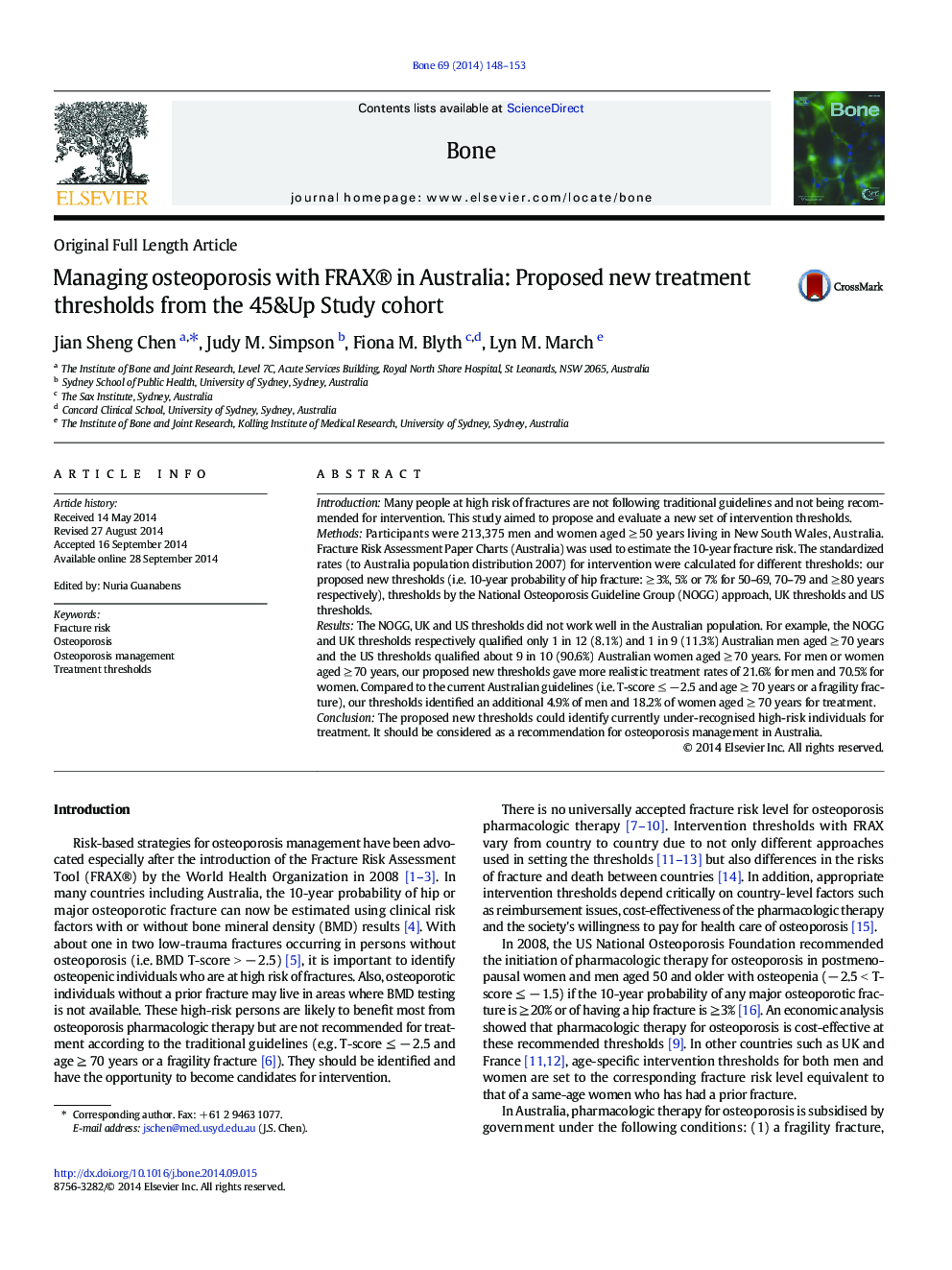| Article ID | Journal | Published Year | Pages | File Type |
|---|---|---|---|---|
| 5890157 | Bone | 2014 | 6 Pages |
â¢Traditional treatment guidelines could miss many at high risk of fractures.â¢Approaches in setting treatment thresholds by UK and US did not work in Australia.â¢Our thresholds could identify under-recognised high-risk persons for treatment.â¢Current osteoporosis management is suboptimal among high-risk Australians.
IntroductionMany people at high risk of fractures are not following traditional guidelines and not being recommended for intervention. This study aimed to propose and evaluate a new set of intervention thresholds.MethodsParticipants were 213,375 men and women aged â¥Â 50 years living in New South Wales, Australia. Fracture Risk Assessment Paper Charts (Australia) was used to estimate the 10-year fracture risk. The standardized rates (to Australia population distribution 2007) for intervention were calculated for different thresholds: our proposed new thresholds (i.e. 10-year probability of hip fracture: â¥Â 3%, 5% or 7% for 50-69, 70-79 and â¥Â 80 years respectively), thresholds by the National Osteoporosis Guideline Group (NOGG) approach, UK thresholds and US thresholds.ResultsThe NOGG, UK and US thresholds did not work well in the Australian population. For example, the NOGG and UK thresholds respectively qualified only 1 in 12 (8.1%) and 1 in 9 (11.3%) Australian men aged â¥Â 70 years and the US thresholds qualified about 9 in 10 (90.6%) Australian women aged â¥Â 70 years. For men or women aged â¥Â 70 years, our proposed new thresholds gave more realistic treatment rates of 21.6% for men and 70.5% for women. Compared to the current Australian guidelines (i.e. T-score â¤Â â 2.5 and age â¥Â 70 years or a fragility fracture), our thresholds identified an additional 4.9% of men and 18.2% of women aged â¥Â 70 years for treatment.ConclusionThe proposed new thresholds could identify currently under-recognised high-risk individuals for treatment. It should be considered as a recommendation for osteoporosis management in Australia.
